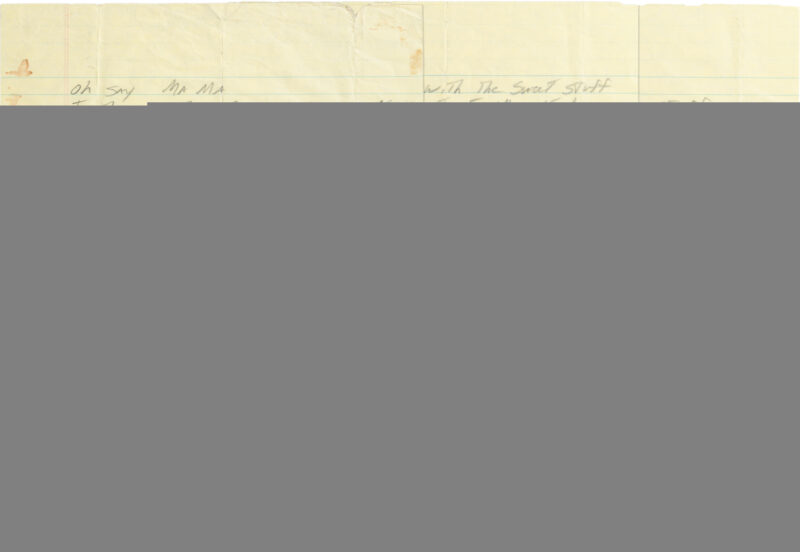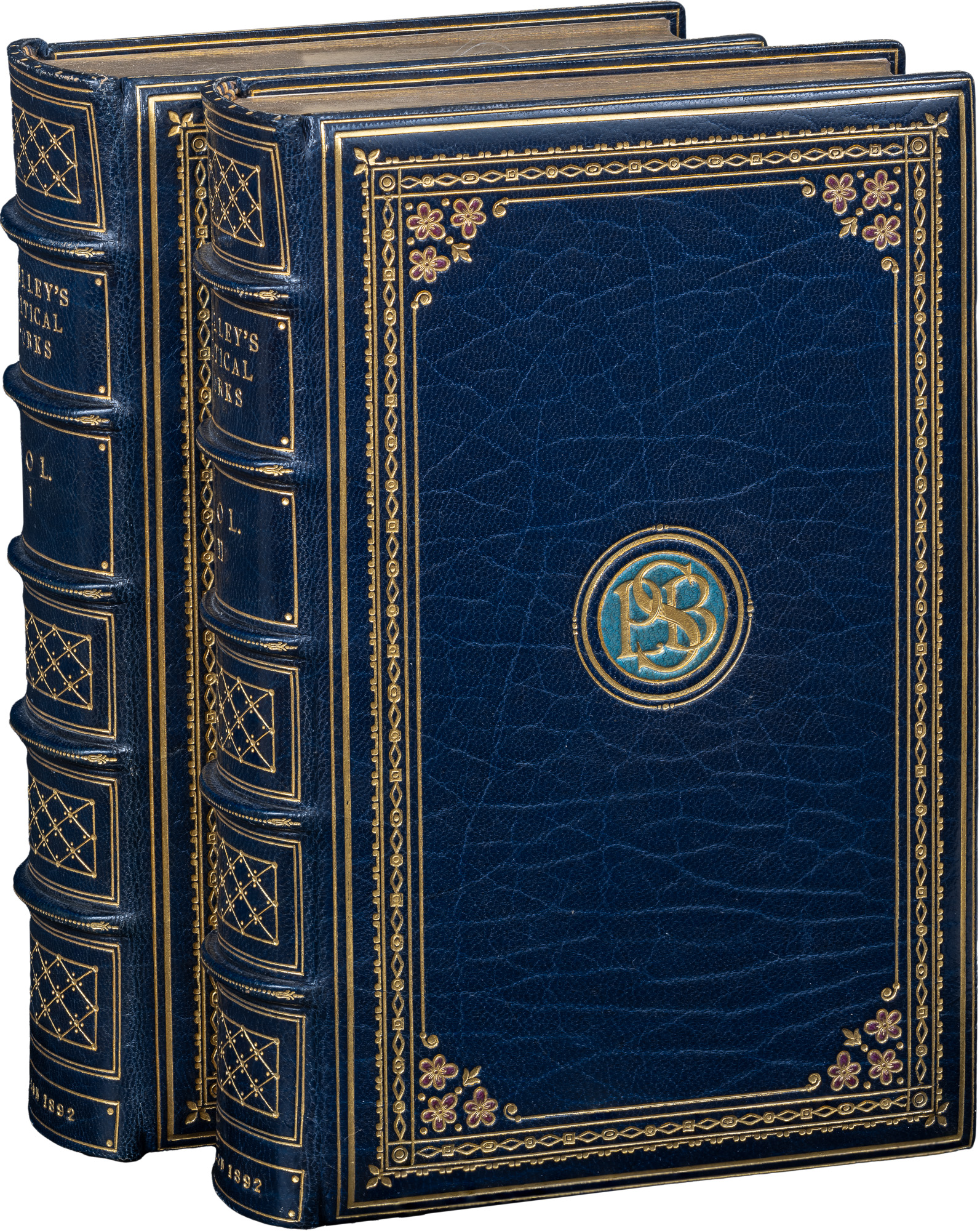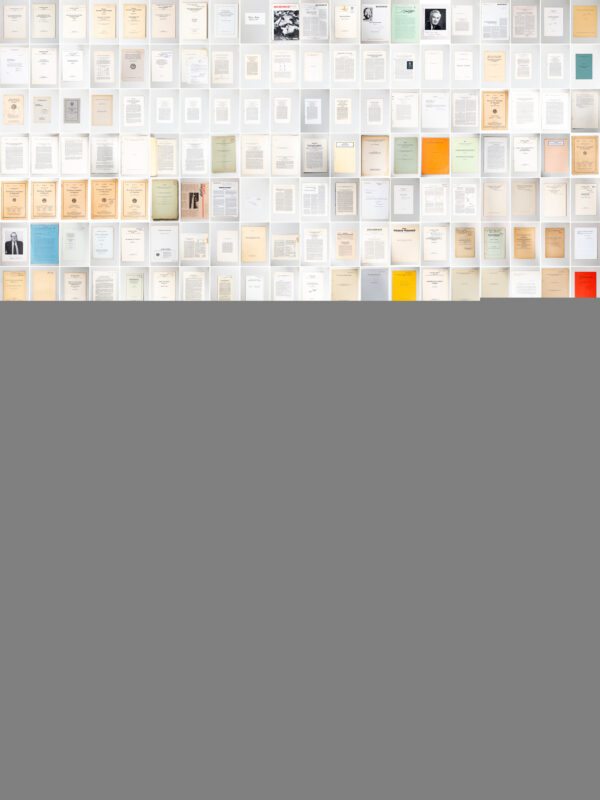
Trouble with the Sweet Stuff; Handwritten Manuscript Lyrics
3 pages of manuscript lyrics written in Idol's hand with pencil on lined and ruled yellow paper, 8.25" x11". Some stains (blood?), smudges, vertical and horizontal fold lines, else very good. No corrections, but there are a number of differences between this manuscript and the final studio version, i.e. the first stanza, order and many other examplesâ"certainly an early working draft. Beautiful custom morocco chemise slip case. Ex-Julien's, donated by Idol for a charity auction. "Trouble with the Sweet Stuff" appeared on Idol's critically acclaimed fourth studio album Charmed Life. The album presents a more mature and developed musician, with sophisticated, edgy, thought-provoking and confessional lyrics. Parke Peterbaugh, writing a review for Rolling Stone, states: "The album is as viscerally exciting and driven as Rebel Yell but is pulled to greater depths by the countervailing forces within the singer." "I was just a baby boy when they told me, God love me, that's enough".
More from Biblioctopus

The Poetical Works
2 vols. A reprinting of the 1839 original, the edition selected by Sangorski & Sutcliffe, England's premier bindery, as the best choice for the binding they planned, based on its typeface, paper, size, and inclusion of all the notes by Shelley's wife Mary, an essential source for the study of Percy's work. A fastidiously executed dark blue crushed morocco, gilt binding. The outside covers with central gilt panel formed by multiple plain and decorative rolls, with cornerpiece clusters of three inlaid lavender morocco pansies, front boards with central inlaid cerulean morocco medallion stamped with the poet's gilt monogram, rear boards with lavender morocco medallion stamped with a gilt pansy within the quote "Pansies let my flowers be" (from "Remembrance"), raised bands, spine compartments gilt in a latticed pattern. Inside, the Doublures are in sky blue morocco, the one at the front of the first volume is a Cosway style miniature portrait under glass, replicating the 1819 portrait by Amelia Curran now hanging in England's National Portrait Gallery, one of the few contemporaneous likenesses of Shelley and the chief source today for Shelley's countenance. The portrait is framed by a laurel wreath set with 6 jewels (3 moonstones and 3 rubies), and surrounded by a pointillé field punctuated by foliate sprays terminating in 46 white flowers, the other 3 doublures with rows of gilt floral and foliate stamps and a trio of inlaid white blossoms in each corner (the bindings with a total of 132 large and small floral inlays), ivory moiré silk endleaves, all edges gilt and delicately gauffered. Frontispiece in each volume, vignette title pages. A fine set in a luscious binding of a body of literature graced with a lyricism "unmatched elsewhere in English verse in its ethereal, ideal beauty" -Day. A clipped inscription in Shelley's hand is tipped in. All collectibles rest on 4 pillars. Rarity, quality, significance and beauty. Don't forget beauty.
Nobel Prize Recipients in Science; a Collection of Documents, More Than Half of Them Signed
365 items, from 118 different Nobel Laureates in Chemistry, Physics, or Medicine, in 16 portfolios. 205 of them signed (signed presentation copies, signed and inscribed, or autographed). 315 of the items are Nobel lectures, offprints or extracts the remaining 50 are letters, signatures, photos or other non-scientific ephemera. Good to fine, though almost all are near fine. Most are Ex-Dr. Myron Printzmetal. A full catalog in chronological order of the year a respective Nobel was awarded is available for view HERE Photos of every item in the collection are here (on our website) in alphabetical order.
A Singed Letter
11 November. 4pp in one bi-folded leaf. The top edge chipped with some losses to words, strengthened with archival tissue tape, else very good. A wonderful and long scientific letter written at a time when Pasteur was making many of his most important discoveries relating to bacteria, pasteurization and the fermentation process of wine. The letter (in French), reads, in part: : "[.] The claims of these gentlemen are based only on errors and I think I have demonstrated it very well this year as in 1866[.] You asked me for an opinion on two points, the action of oxygen and the temperature of the must. As for oxygen, note, as is exhibited in my studies on wine [Paris, Imprimerie impériale, 1866] that it is necessary to distinguish carefully between a brush oxidation and a very slow oxidation, the difference is enormous between these two modes of action: the first is almost always harmful[.] As for the heating of very sweet wines, here is the complete theory that you must have in mind to guide you in practice: 1° the presence of alcohol and acids in the wine has a great influence on the minimum degree necessary for conservation after heating, that is to say for the germs to be killed. The more acidic and alcoholic a wine is, the less you need to heat to kill the germs, the closer you get to the state of a [normal must], the more you must raise the temperature. If you have had difficulties in preserving a certain wort by heating it to a certain temperature, I urge you to try it out either by raising the temperature further or by adding a small amount of alcohol to the wort beforehand. To make myself clear, I invite you to consult my work on spontaneous generations. You will see that everything depends on the state of acidity, neutrality, or very low alkalinity of the environment for the determination of the degree of temperature proper to kill the germs. For example, I have shown that milk, which is weakly alkaline, requires a temperature between 100 and 110°. On the other hand, urine, which is a little acidic and which requires only a temperature lower than 100°, requires immediately a temperature at least equal to and higher than that if it is made neutral. In 1865 I experienced on very sugary white wines from Bergerac to stop their fermentation, I needed a temperature of 75°. Without a doubt, I would have had to go even further if the alcoholic fermentation that had already occurred had been less pronounced, that is, had introduced less alcohol into the wine[.]"Trouble with the Sweet Stuff; Handwritten Manuscript Lyrics: https://rarebookinsider.com/rare-books/trouble-with-the-sweet-stuff-handwritten-manuscript-lyrics/

